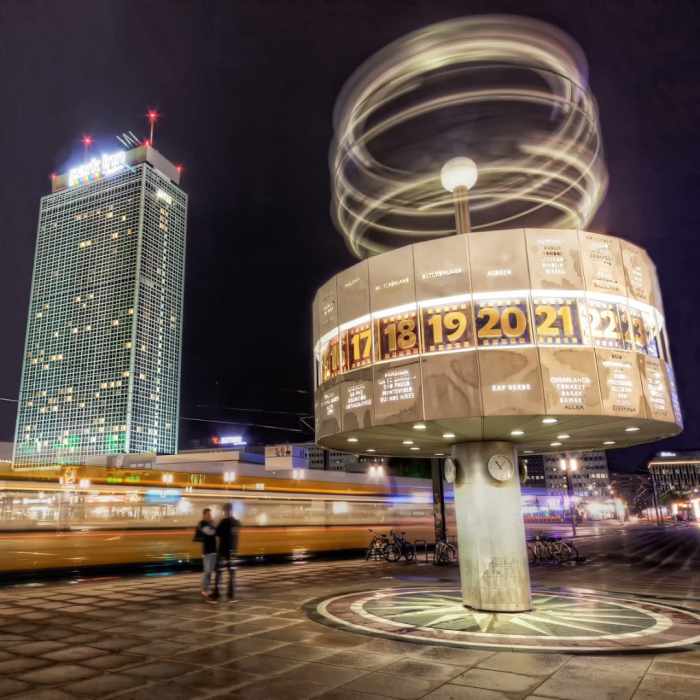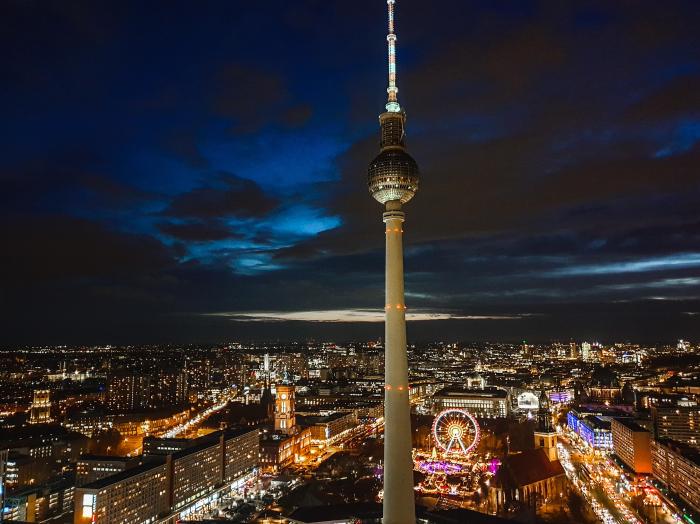Berlin Time, a time zone steeped in history and innovation, has played a pivotal role in shaping the rhythm of life in the German capital and beyond. From its humble beginnings to its modern-day advancements, the story of Berlin Time is a fascinating exploration of human ingenuity and the relentless pursuit of precision.
Throughout history, Berlin has witnessed a succession of time zones, each reflecting the city’s evolving political and cultural landscape. The development of clocks and the standardization of timekeeping practices brought a new level of accuracy to the measurement of time, transforming the way people lived and worked in Berlin.
Time Zones in Berlin

The concept of time zones is a way of dividing the Earth into different regions, each of which has its own standard time. This is necessary because the Earth rotates on its axis once per day, and the sun rises and sets at different times in different parts of the world. Time zones are typically defined by meridians of longitude, which are imaginary lines that run from the North Pole to the South Pole. The prime meridian, which passes through Greenwich, England, is the starting point for all time zones.
Berlin is located in the Central European Time (CET) zone, which is one hour ahead of Coordinated Universal Time (UTC). This means that when it is noon in Berlin, it is 11:00 AM in London and 6:00 AM in New York City.
The vibrancy of Berlin time extends beyond the German capital, reaching far and wide. Like the captivating allure of barry island , Berlin time resonates with an energy that transcends borders. It’s a time that embraces both the historic charm of the past and the boundless possibilities of the future, echoing the spirit of Berlin itself.
Time Zone Changes in Berlin
Berlin has changed its time zone several times throughout history. The following table lists the different time zones that have been used in Berlin:
| Year | Time Zone |
|---|---|
| 1893-1918 | Central European Time (CET) |
| 1918-1945 | Eastern European Time (EET) |
| 1945-1990 | Central European Time (CET) |
| 1990-present | Central European Time (CET) |
The factors that have influenced Berlin’s time zone changes include political changes, economic factors, and the desire to synchronize with neighboring countries.
Berlin Time, also known as Central European Time (CET), is observed in many countries across Europe. Interestingly, this time zone is also used by the nomadic bedouin people who inhabit the deserts of the Middle East. The bedouin have a unique way of life that has been shaped by the harsh desert environment.
They often travel long distances in search of water and grazing land, and their nomadic lifestyle has influenced their culture and traditions. Berlin Time provides a common time reference for the bedouin as they move across different regions.
Historical Timekeeping in Berlin

Before the invention of clocks, Berliners relied on natural cues to measure time. They used the position of the sun and moon to determine the time of day and night, and the changing seasons to mark the passage of years.
With the development of clocks in the 14th century, timekeeping in Berlin became more accurate. The first clocks in Berlin were large and expensive, and only wealthy individuals could afford them. However, as clocks became more affordable, they became more widespread, and by the 16th century, most Berliners had access to a clock.
Berlin Time and International Events

Berlin time has played a significant role in coordinating international activities and events throughout history. As the capital of Germany, Berlin has been a hub for diplomacy, trade, and cultural exchange.
One of the most notable examples of Berlin time’s influence on international events was the signing of the Treaty of Versailles in 1919. The treaty, which ended World War I, was signed in the Hall of Mirrors at the Palace of Versailles in France. However, the time used for the signing ceremony was Berlin time, reflecting Germany’s status as a major power at the time.
Berlin Time and Global Communication
Berlin time has also been used to coordinate international communication and collaboration. For example, the Universal Time Coordinated (UTC) system, which is the basis for civil time around the world, was originally based on the mean solar time at the Greenwich Observatory in London. However, in 1972, the International Telecommunication Union (ITU) designated Berlin time as the primary reference for UTC, reflecting the city’s importance as a global communications hub.
Berlin Time is one hour ahead of Coordinated Universal Time (UTC) and is observed in most of Germany. However, if you’re planning a trip to Barcelona, you’ll need to adjust your watch again as Barcelona Time is one hour ahead of Berlin Time.
Remember to factor in this time difference when planning your itinerary and transportation arrangements to ensure a smooth and punctual trip.
Cultural Significance of Berlin Time

Berlin time has become synonymous with punctuality and efficiency, both within Germany and internationally. The city’s reputation for precision has influenced the daily lives and routines of Berliners, who take pride in adhering to schedules and appointments. This cultural significance is reflected in various aspects of Berlin life, from the transportation system to social interactions.
Cultural Events and Traditions, Berlin time
Berlin time plays a crucial role in cultural events and traditions. The city’s renowned New Year’s Eve celebration, for example, culminates at midnight with a spectacular fireworks display over the Brandenburg Gate. Similarly, the Berlin International Film Festival, one of the world’s most prestigious film events, adheres to a strict schedule of screenings and events throughout its duration. These cultural touchstones reinforce the importance of timekeeping in Berlin and contribute to the city’s reputation for precision.
Innovations in Timekeeping in Berlin

Berlin has been at the forefront of timekeeping innovations, contributing significantly to the advancement of timekeeping practices and the perception of time in the city.
The establishment of the Physikalisch-Technische Reichsanstalt (PTR) in 1887 marked a pivotal moment in Berlin’s timekeeping history. The PTR became a leading institution in the field of metrology, developing and maintaining the German national time standard. In 1925, the PTR established the first atomic clock, revolutionizing timekeeping accuracy and paving the way for the development of modern timekeeping technologies.
Atomic Clocks
Atomic clocks, based on the natural vibrations of atoms, provide the most precise timekeeping method available. The PTR’s development of the atomic clock had a profound impact on timekeeping in Berlin, leading to the establishment of the Coordinated Universal Time (UTC) system in 1967. UTC became the global standard for timekeeping, and Berlin’s atomic clocks played a crucial role in its accuracy and stability.
Time Synchronization Technologies
Berlin has also been instrumental in the development of time synchronization technologies. In the 1970s, the PTR developed the Network Time Protocol (NTP), which enables computers to synchronize their clocks over a network. NTP revolutionized timekeeping in computer networks and has become an essential component of the internet’s infrastructure.
Future Advancements
The future of timekeeping technology holds exciting prospects for Berlin. Researchers are exploring the potential of quantum clocks, which promise even greater accuracy and stability than atomic clocks. Additionally, the integration of timekeeping technologies into everyday devices, such as smartphones and wearable devices, is expected to further enhance our perception of time and its impact on our daily lives.
Berlin’s contributions to timekeeping innovations have had a profound impact on the city’s development and its standing as a global hub for scientific research and technological advancement. As the field of timekeeping continues to evolve, Berlin is poised to remain at the forefront of these advancements, shaping the future of timekeeping and its applications in various domains.
Closure

Today, Berlin Time continues to evolve, driven by technological advancements and the ever-changing needs of a globalized world. As we look to the future, it is clear that Berlin will remain at the forefront of timekeeping innovation, shaping the way we perceive and experience time in the years to come.
Expert Answers
What is the current time zone in Berlin?
Central European Time (CET) during standard time and Central European Summer Time (CEST) during daylight saving time.
How has Berlin Time influenced the daily lives of Berliners?
Berlin Time has fostered a culture of punctuality and efficiency, shaping the daily routines and schedules of the city’s residents.
What are some notable innovations in timekeeping that have originated in Berlin?
Berlin has been home to the development of atomic clocks and the standardization of time signals, among other significant advancements.